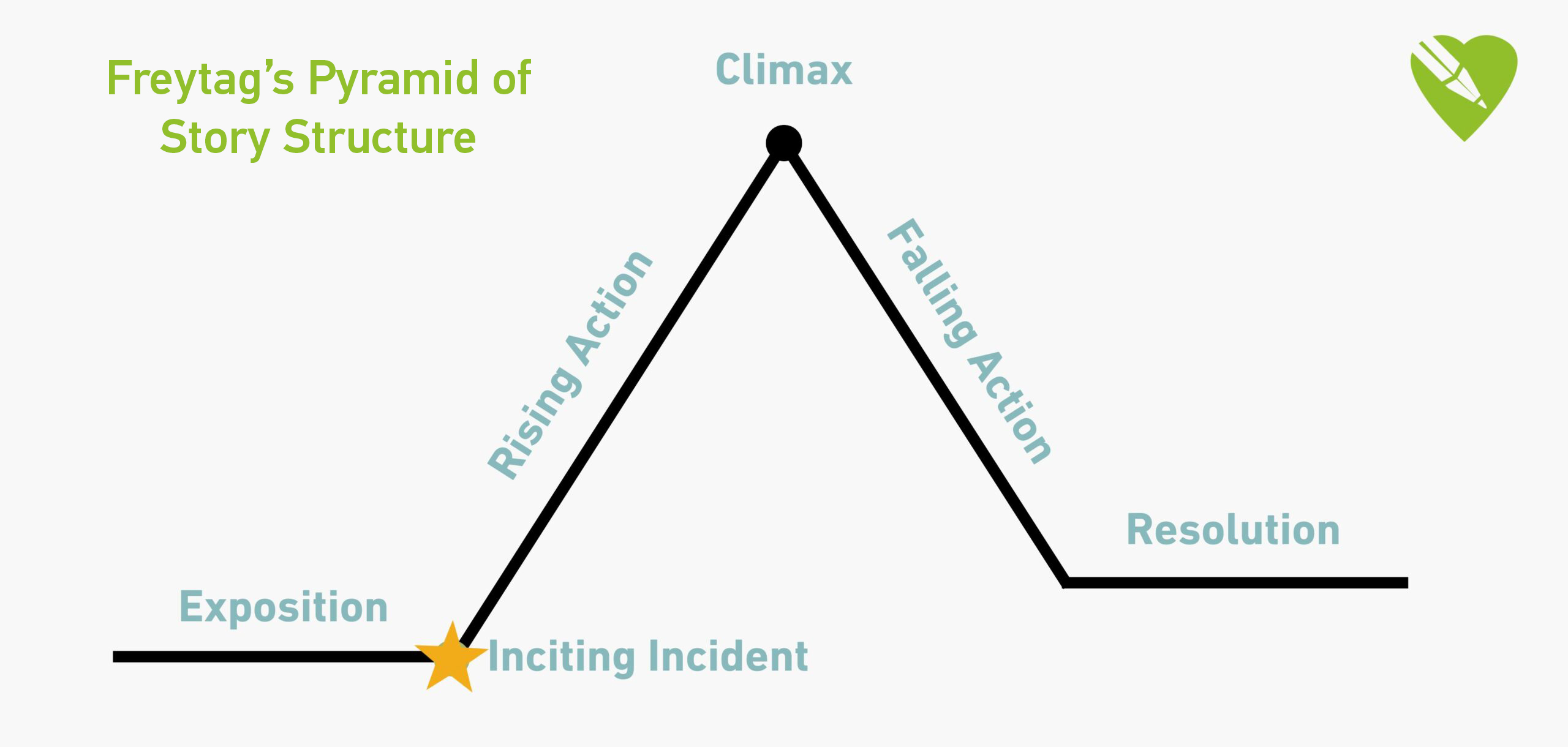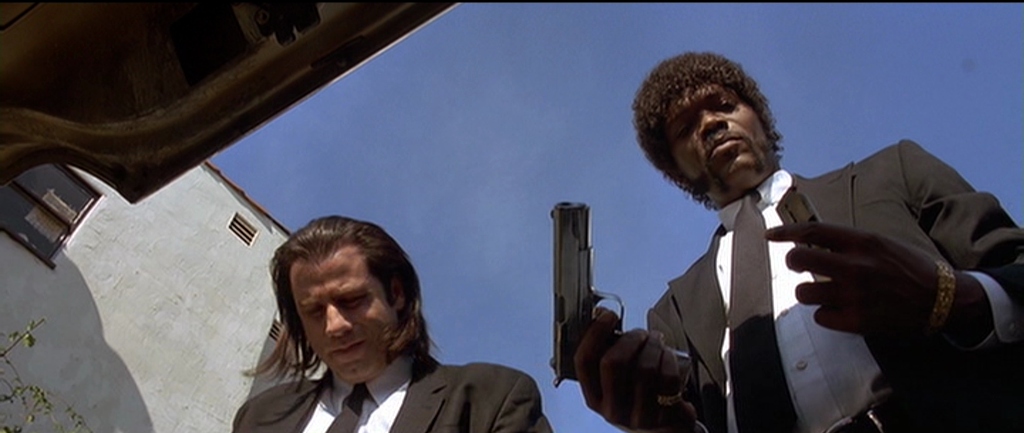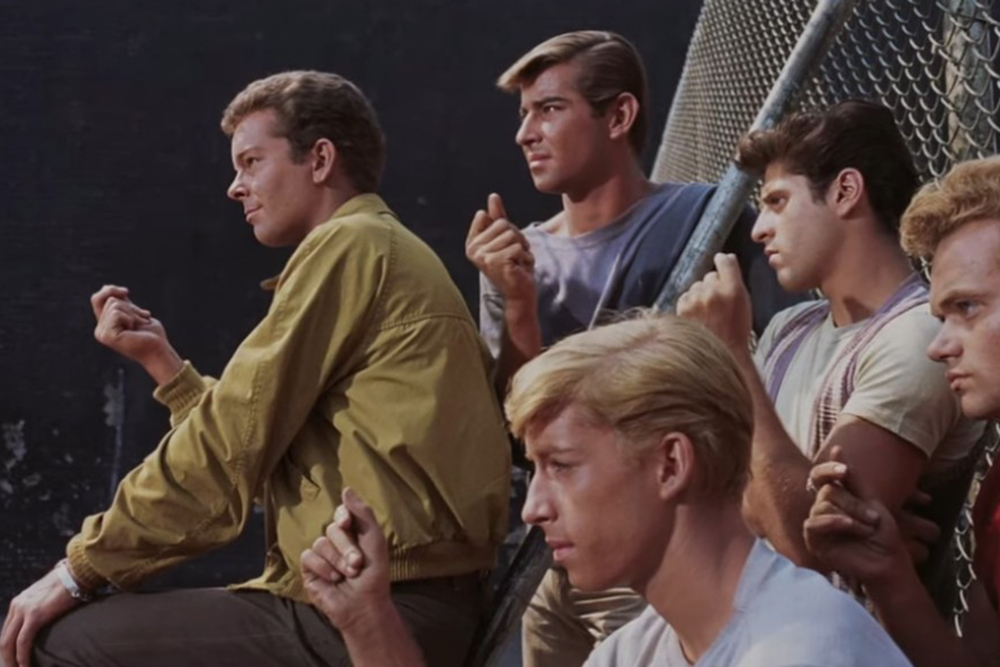Rising action refers to the series of events that lead from a story’s inciting incident to the climax. In this article, we will examine Freytag’s pyramid of story structure, explore the importance of “rising action” as a way to convey meaning, and finally, I will offer you a powerful Story Weapon to help you write a dynamic story with rising action that builds in meaning as it progresses.
Rising action is the series of escalating events between a story’s inciting incident and climax that build tension, deepen character development, and convey the story’s meaning. By testing the protagonist through obstacles that reveal their internal and external conflicts, rising action keeps readers engaged and drives the narrative toward a powerful, inevitable climax.
Table of Contents
What is rising action?
Rising action takes off from the inciting incident and builds to a satisfying climax. Simply put, the rising action is the series of events that play out as characters go on a journey and face obstacles that both drive the plot forward and deepen their personal development.
What is more satisfying than feeling like you are in the confident hands of a master storyteller? The tension is building, the stakes are rising, and the reader is eagerly anticipating what happens next. With each surprise, each twist and turn, you sense that the author is keeping you connected to the theme, that the story is building in meaning as it progresses, and that you are being moved inexorably towards a conclusion that is both a total surprise, and yet, utterly inevitable.
Whether you’re a seasoned writer or just beginning your writing journey, understanding the purpose and power of rising action is central to telling a compelling story.
5 stages of plot
The term “rising action” was first coined by Gustav Freytag, a German novelist and playwright, who believed all story plots could be broken down into five stages – exposition, rising action, climax, falling action, resolution.

As you can see in this diagram, Freytag laid out story in a symmetrical manner. While this can be a helpful tool in understanding story structure, the graph is not universal to all stories. In fact, rising action is typically the longest part of a story, containing a bulk of the events that take place.
What is the purpose of the rising action?
The purpose of rising action is to build narrative drive, increase tension, convey meaning, dramatize character development, and maintain reader engagement.
Rising action deepens the plot as the character development grows and events taking place further emphasize the central dilemma — which is the source from which all conflict arises.
Story Progression
The central conflict is introduced in the inciting incident, sending your protagonist on a journey. That’s where the rising action comes in.
With every obstacle and challenge your protagonist faces, the tension builds. If you don’t have a strong narrative, this is where you will lose your readers. When tension is not progressively escalating, even in subtle ways, you will fail to give them a reason to keep reading.
Character Development
Rising action shapes a character’s development as we see them battle both internal and external conflict. With each challenge, the reader or audience gets pulled more deeply into the protagonist’s dilemma. Their actions and responses to each obstacle deepens the reader’s connection to your protagonist that keeps them invested in the story.
Typically, the external conflict is introduced through the inciting incident and amplified through the roadblocks put in the protagonist’s way. The rising action contains mounting external challenges while simultaneously revealing the internal struggle the protagonist experiences as they are tested by these events.

Writing a compelling rising action
Obstacles test the protagonist
Writing a compelling rising action centers around the obstacles you put your protagonist through. Remember, character suggests plot. These obstacles should test your protagonist and present questions they have to face in order to understand the purpose of their journey. These questions should then build on top of each other until the ultimate test: the climax.
Side characters & Subplots
While we want to build the reader’s anticipation, the rising action can also introduce peripheral characters and subplots. This is an opportunity to deepen the reader’s understanding of the theme, while creating potential for comedic or romantic relief that may offer respite from the mounting tension, while keeping the reader engaged.
These side characters and plots may not take part in the climax of the story. They can, however, be revisited in the falling action portion to give readers a satisfying conclusion.
That being said, be sure to keep your plot focused. Any challenges faced or characters introduced should ultimately pay off by leading us back to the central conflict and contribute to the themes being conveyed.

Your story weapon: Explore all the options
How do you write a compelling narrative that builds in meaning as it progresses? It is important to explore ways to surprise your readers by subverting expectations. I tell my students, if you know a character is going to go left, you must first have them go right. In this way, you will delight your reader by dramatizing the character’s dilemma.
Let’s try it.
Choose a scene that you have already written, but that perhaps feels a little flat. Or maybe you already really like the scene, but wonder if it could be even more dynamic.
Ask yourself these three questions:
- What does the protagonist want in the scene?
- What is the obstacle standing in their way?
- How is this obstacle urgent?
Don’t confuse obstacle with hostility or aggression. For example, you might have a scene where Billy asks Sally to marry him, and Sally says yes. So, we have clarity on the first question, but not on the next two. But what if Sally said, “Yes, I will marry you, but only if you work for my father, the hitman.” Billy now has an obstacle. He wants to marry, but he doesn’t want to be a hitman. Now we have satisfied the second question. But what about question #3? How is it urgent? What if Sally’s father entered the room, smiled at Billy and said, “Welcome to the family.” What if Sally’s father made it difficult for Billy to say no?
Ask yourself these three questions and then take another look at the scene you are working on. Notice how these three questions will help to amplify the drama in the rising action and more in your story by adding meaning, stakes and urgency.
Find out more in one of our workshops – The 90-Day Novel, The 90-Day Memoir, Story Day







